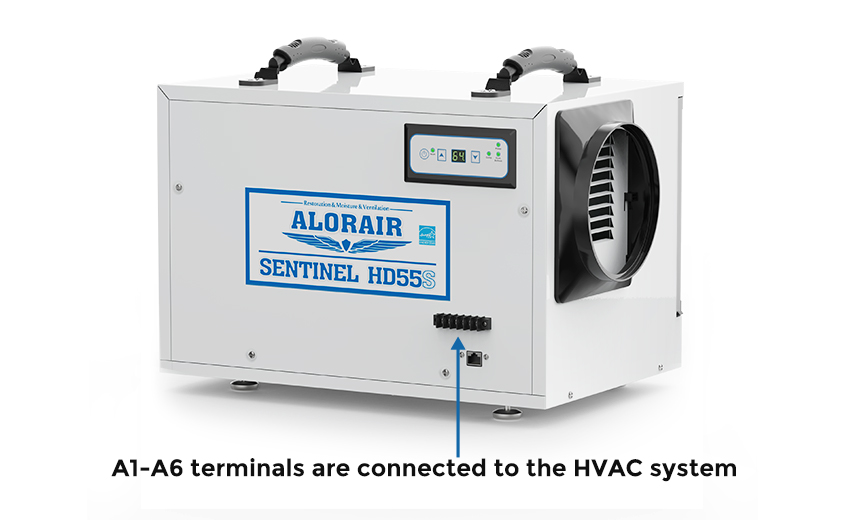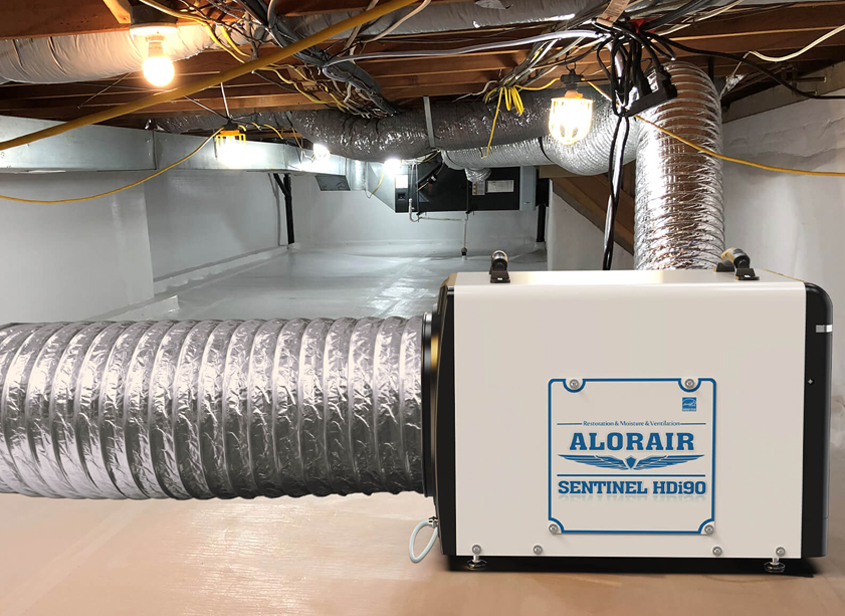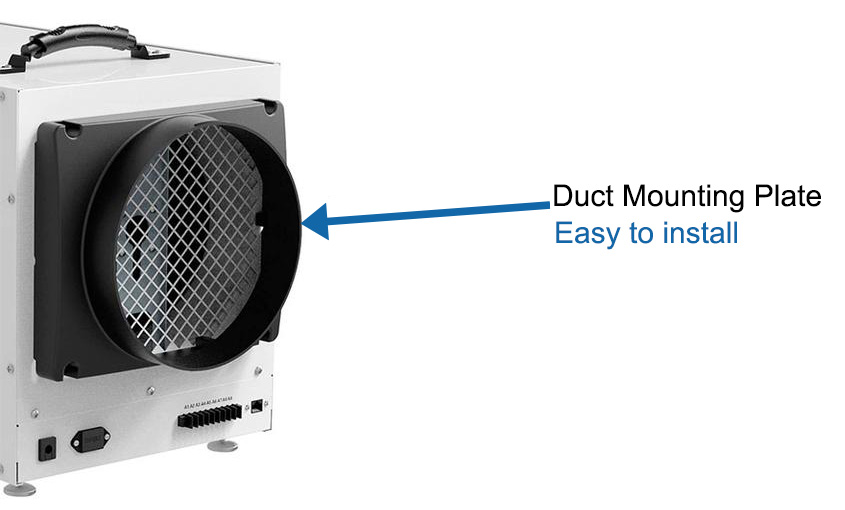Maintaining indoor air quality and comfort is essential in any setting, from residential homes to commercial spaces. Dehumidifiers are crucial as they remove extra moisture from the air. This helps prevent mold and mildew, protects building materials, and keeps the environment healthier.
There are two primary types of dehumidifiers to consider: ducted and non-ducted. Each serves different needs depending on the size of the space, integration with existing systems, and specific humidity control requirements.
What are ducted dehumidifiers?
Ducted dehumidifiers are designed to connect directly to a building’s heating, ventilation, and air conditioning (HVAC) system through ductwork. This setup allows them to draw moist air from various building parts, process it to remove moisture, and then redistribute the drier air back into the space.

This process involves several key components, such as a fan, compressor, evaporator, and condenser. The air, once dehumidified, can either rejoin the main airflow or be directed to specific areas. This makes ducted systems effective for managing humidity on a large scale or in targeted zones.
What is the Purpose of the Duct?
Duct dehumidifiers usually feature two ducts, although some models are designed to connect to just the outlet duct. The inlet duct is primarily used with air circulation and ventilation fan systems. It serves to move and transport air and increase airflow. It removes contaminated air from an enclosed area and exhausts it outside the controlled area.
The outlet duct changes the airflow direction to the outside. In addition, installing the dehumidifier in a specific area and venting the indoor air through this duct reduces the impact of machine operation noise on the active region.
An example of a ducted unit is the Sentinel HDi90 dehumidifier, which be connected to the inlet and outlet ducts. Here is a photo of it when it is connected.
How do ducted and non-ducted dehumidifiers compare?
Choosing between ducted and non-ducted dehumidifiers depends on specific needs, the layout of your space, and personal preferences for maintenance and installation. Each type offers distinct advantages and challenges.
Below are the pros and cons of each system. Knowing this can help you make the most economical decision for your living environment.
Ducted Dehumidifiers
Pros: They are efficient for large spaces, can be integrated with existing HVAC systems for whole-home control, and are less visible and quieter than non-ducted units.
Cons: Higher initial installation cost, more complex installation process, typically requires professional maintenance.
Non-Ducted Dehumidifiers
Pros: It is more portable and flexible in placement, easier for non-professionals to install and maintain, and lower in initial cost.
Cons: It may be less efficient in large spaces, more visible and noisier. It may use more power if dehumidifying a specific space.
Note: Ducted dehumidifiers and non-ducted dehumidifiers are not absolute. Some dehumidifiers will come with a ducted panel, and when you don’t connect the ducts, they function as non-ducted dehumidifiers.
When to use a duct dehumidifier?
Large or Multiple Rooms
Ducted dehumidifiers like the Sentinel HD55S provide superior moisture control in large or segmented spaces. By connecting to ductwork, these systems can distribute dehumidified air more effectively across extensive areas, maintaining balanced humidity levels.
Integrated HVAC Systems
Homes with existing HVAC ductwork can benefit from the seamless integration of a ducted dehumidifier. Ducted dehumidifiers integrate into a building’s existing HVAC infrastructure, maintaining aesthetics and minimizing visual disruption. They are typically installed in non-living spaces like basements or above ceilings, making them quieter than non-ducted models.
It is ideal for areas where noise levels and visual harmony are crucial, such as residential spaces and professional environments that demand quiet.
Basements and Crawl Spaces
These areas often require powerful moisture control solutions. Duct dehumidifiers provide tailored humidity management in them, especially in complex layouts. It improves upper space indoor air quality by removing excess moisture and associated air pollutants such as allergens and mold spores. This improvement can have a direct positive effect on the health and comfort of building occupants.
Conclusion
Choosing between ducted and non-ducted dehumidifiers involves evaluating specific environmental needs, space configurations, and personal preferences for installation and maintenance. Ducted dehumidifiers, integrated into the building’s HVAC system, are especially beneficial for large or complex spaces requiring consistent and extensive humidity control.
They offer advantages such as enhanced air quality, energy efficiency, and seamless integration into existing infrastructures, making them less obtrusive and quieter. Although the initial setup for a ducted dehumidifier might be higher than non-ducted units, the long-term energy savings and durability often offset the initial costs. Also, maintaining optimal humidity levels can prevent damage to building materials and contents, reducing maintenance and repair expenses.










.jpg)
.jpg)

.jpg)
.jpg)
.HDi90.png)
.HD90.png)









.jpg)
.jpg)
.jpg)





.jpg)
.jpg)


.jpg)








.jpg)
.jpg)








.jpg)
.jpg)























.jpg)
.jpg)
.jpg)





.jpg)
.jpg)
















-.jpg)
.jpg)

.jpg)
.jpg)



























 Exclusive offers
promotions
Exclusive offers
promotions



